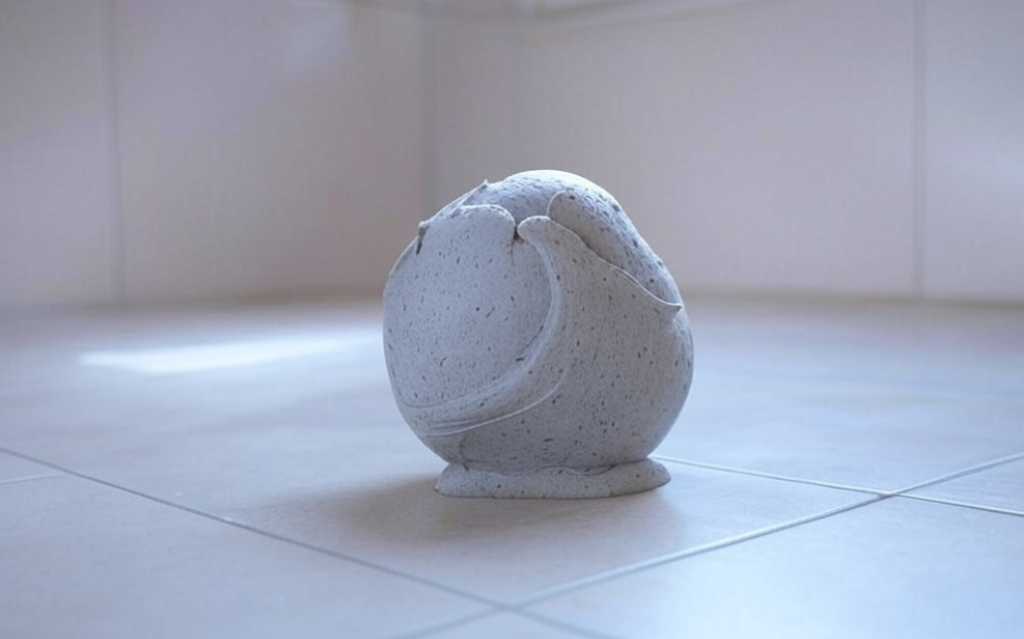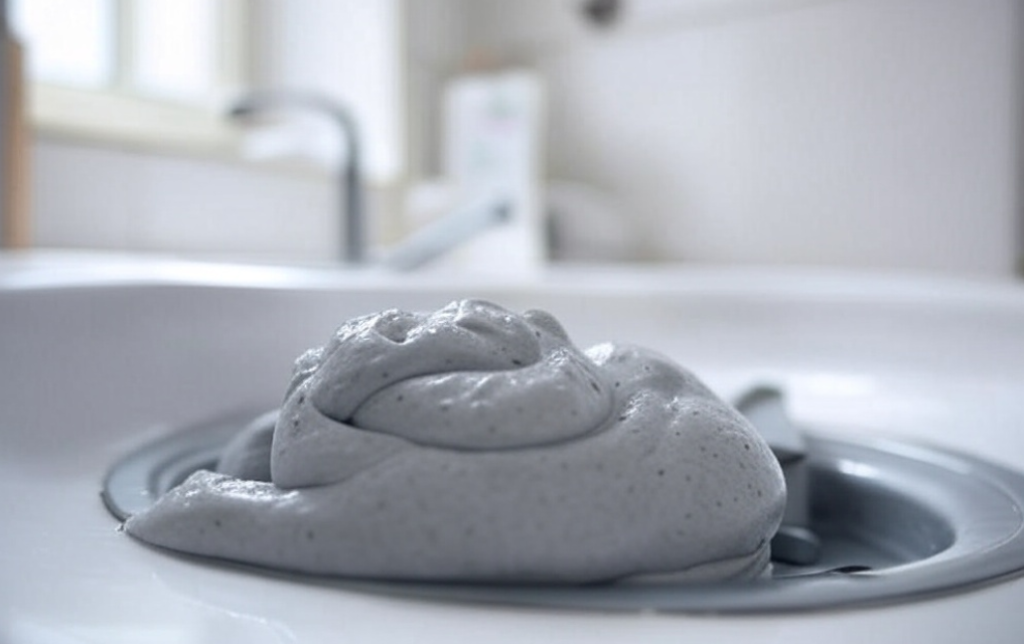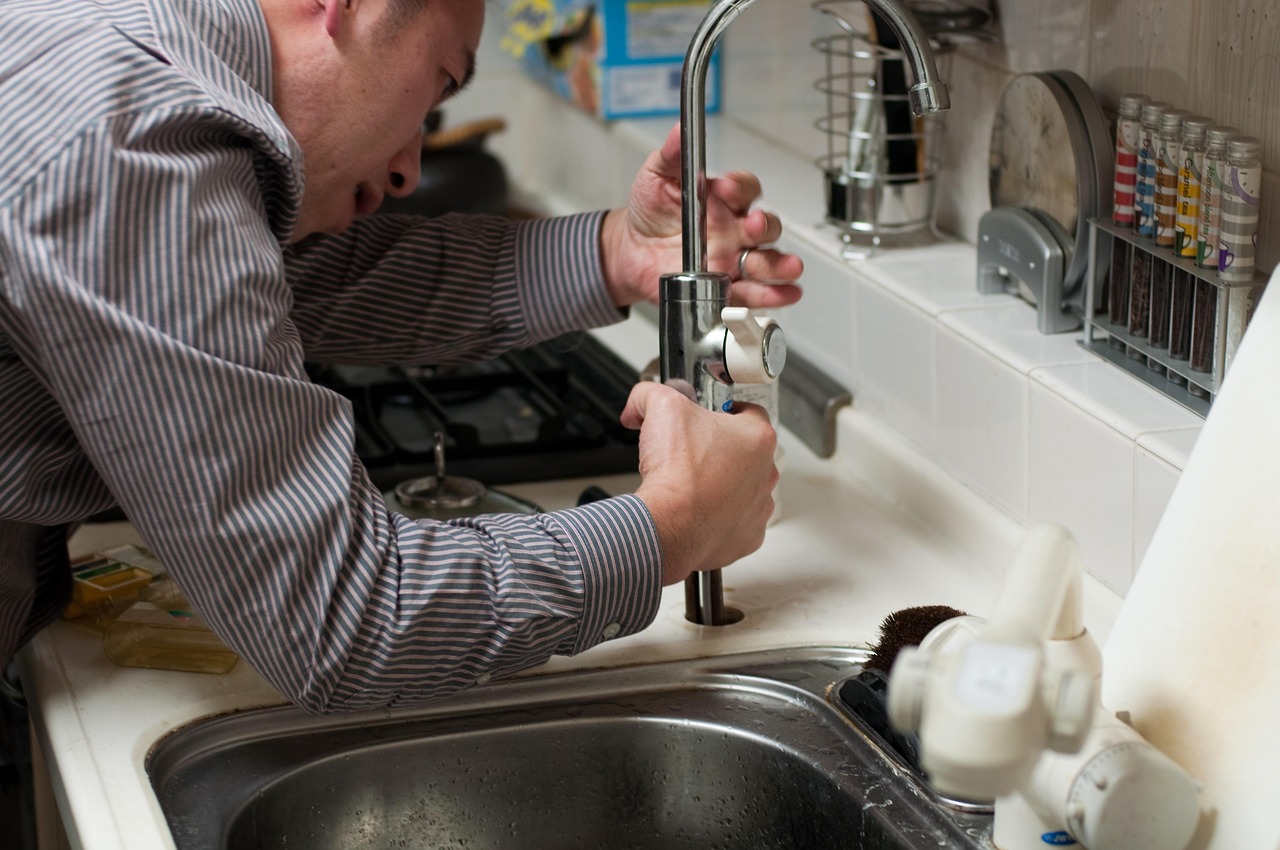When tackling plumbing projects, using the right materials is crucial for preventing leaks and ensuring durability. One common question that arises is whether plumber’s putty can be used on threaded connections. Can I use plumber’s putty on threads? This seemingly simple query requires understanding the properties of plumber’s putty and the requirements of threaded pipe joints.
What Is Plumber’s Putty and How Does It Work?
Plumber’s putty is a soft, pliable sealing compound specifically designed for creating watertight seals in plumbing applications. This clay-like substance consists primarily of mineral oils and clay fillers, giving it a malleable consistency that doesn’t harden completely over time.
Composition of Plumber’s Putty
The standard composition of plumber’s putty includes:
- Mineral oils (40-60%)
- Clay fillers (30-50%)
- Limestone powder (5-15%)
- Talc (2-10%)
This oil-based formula creates a substance with a consistency similar to modeling clay, allowing plumbers to shape it easily during installation. Unlike epoxy or silicone sealants, traditional plumber’s putty remains slightly pliable even after curing, which contributes to both its benefits and limitations.
How Plumber’s Putty Creates Seals
Plumber’s putty forms seals through compression rather than adhesion. When pressed between two smooth surfaces, it:
- Fills microscopic gaps and imperfections
- Creates a water-resistant barrier when compressed
- Maintains flexibility, accommodating minor movements
- Prevents water from seeping through flat-surface connections
The installation process typically involves rolling the putty into a rope-like shape and placing it along the surface that requires sealing. When the components are assembled and tightened, the putty compresses, forming a water-resistant seal in non-pressurized applications.
Common Applications for Plumber’s Putty
Plumber’s putty excels in specific applications where its properties are advantageous:
- Sink drains and strainers: Creating watertight seals between drain flanges and sinks
- Faucet bases: Preventing water from seeping under faucet fixtures
- Pop-up drain assemblies: Sealing components in bathroom sink drains
- Shower drains: Forming waterproof barriers around drain openings
These applications share a common characteristic: they involve flat, non-threaded surfaces under minimal pressure. The putty works by filling the space between two smooth surfaces rather than acting as a thread sealant or adhesive.

The Truth About Using Plumber’s Putty on Threads
Plumber’s putty fails as an effective sealant for threaded connections despite its usefulness in other plumbing applications. Its physical properties and performance characteristics make it unsuitable for the specific demands of threaded joints in plumbing systems.
Why Plumber’s Putty Isn’t Recommended for Threads
Plumber’s putty lacks the essential characteristics needed for properly sealing threaded connections. Unlike thread sealants, it has several critical deficiencies:
- Doesn’t harden or create strong mechanical bonds required to withstand pressure in pipe threads
- Soft, pliable nature that makes putty perfect for sink drains becomes a significant disadvantage in threaded applications
- Cannot properly fill spiral gaps in threaded connections completely
- Fails to maintain integrity under pressure fluctuations and temperature changes
- Deteriorates rapidly when exposed to water pressure
- Washes away gradually from threaded connections over time
Professional plumbers consistently choose specialized thread sealants like PTFE tape or pipe dope that are specifically engineered to conform to thread geometry and create reliable, long-lasting seals.
Potential Risks and Consequences
Using plumber’s putty on threaded connections is not recommended due to the potential risks it poses to plumbing systems. Plumber’s putty is not designed to withstand water pressure, leading to seal failure and the rapid development of leaks. These issues can lead to multiple serious problems:
- Significant water damage to walls, floors, and ceilings, with repair costs often ranging from $1,000 to $4,000 for moderate cases
- Rapid failure of threaded connections, typically within 2-3 months under normal water pressure
- Pipe joint separation due to improper sealing, causing severe flooding in a short time
- Early warning signs such as inconsistent water flow and pressure drops that indicate failing thread seals
- Potable water contamination from the oil-based composition of plumber’s putty
- Plumbing code violations in many jurisdictions where putty isn’t approved for threaded connections
- Insurance claim denials if water damage occurs from using non-compliant sealants
It is essential to choose appropriate thread sealants to ensure safety and compliance with plumbing standards.

Better Alternatives for Sealing Threaded Connections
Threaded plumbing connections require specialized sealants designed to withstand pressure and prevent leaks. Professional plumbers rely on two primary alternatives to plumber’s putty for threaded joints: pipe thread compounds and PTFE tape. These products create reliable seals by filling the microscopic gaps between threaded connections while maintaining the mechanical integrity of the joint.
Pipe Thread Compounds (Pipe Dope)
Pipe dope offers superior sealing properties for threaded connections compared to plumber’s putty. This paste-like substance contains resins, oils, and fillers specifically formulated to create pressure-resistant seals in pipe threads. Modern pipe dopes come in various formulations, including non-hardening varieties that maintain flexibility while preventing leaks under pressure.
Key advantages of pipe thread compounds include:
- Chemical resistance to most household chemicals, solvents, and fuels
- Temperature stability from -50°F to 500°F depending on the formulation
- Pressure tolerance up to 10,000 PSI in proper applications
- Gap-filling capabilities that accommodate imperfections in threads
- Lubricating properties that facilitate proper tightening without thread damage
When applying pipe dope, professionals spread a thin, even layer on the male threads only, leaving the first thread clean to ensure proper alignment. This application method prevents excess compound from entering the water system while maximizing sealing effectiveness.
PTFE Tape (Teflon Tape)
PTFE tape provides a clean, effective solution for sealing threaded connections in plumbing systems. This thin, white tape (sometimes yellow for gas lines) wraps around pipe threads to create a watertight and gastight seal. Made from polytetrafluoroethylene, the same material as Teflon, this tape offers exceptional chemical resistance and longevity.
The benefits of PTFE tape include:
- Easy application requiring no drying time or special tools
- Chemical inertness making it suitable for potable water systems
- Consistent performance across temperature ranges from -450°F to 500°F
- Precise application that prevents contamination of water supplies
- Removability that allows for future disassembly without damage to threads
Correct application involves wrapping the tape clockwise around clean, dry male threads 3-4 times, slightly overlapping each layer. The tape compresses when the fitting is tightened, filling voids between the threads and creating a reliable seal. For optimal results, plumbers often combine PTFE tape with a small amount of pipe dope for challenging connections or where vibration occurs.
When Plumber’s Putty Is Actually Appropriate
Plumber’s putty excels in specific applications where its unique properties provide optimal sealing performance. Understanding these appropriate uses helps prevent misapplication and ensures successful plumbing projects.
Proper Applications for Plumber’s Putty
Plumber’s putty performs best in static, non-pressurized connections where compression creates watertight seals. These applications include:
- Sink drain flanges: The putty creates a reliable seal between the drain flange and sink basin, preventing water from seeping underneath.
- Faucet bases: Applied beneath decorative faucet bases, it prevents water infiltration while allowing for future disassembly.
- Pop-up drain assemblies: Putty seals the connection between pop-up drain mechanisms and the sink surface without hardening permanently.
- Shower drain installations: It forms effective seals between shower drain bodies and the shower base in non-pressurized scenarios.
- Decorative drain covers: Putty creates clean, watertight connections for basket strainers and other decorative drain components.
- Undermount sink edges: In some installations, putty helps seal the rim of undermount sinks to the underside of countertops.
These applications leverage plumber’s putty’s core strengths: malleability, water resistance, and ability to maintain a flexible seal under compression. The putty remains slightly pliable even after setting, accommodating minor movement without cracking or breaking the seal. For these connections, plumber’s putty offers advantages over silicone including easier cleanup, better workability, and simpler replacement during future maintenance.
Common Misconceptions About Plumber’s Putty
“It’s an All-Purpose Plumbing Sealant”
Many DIY enthusiasts mistakenly believe plumber’s putty works as a universal sealing solution for all plumbing connections. This misconception stems from the product’s name and widespread availability. In reality, plumber’s putty is designed specifically for creating compression seals in non-pressurized applications like sink drains and faucet bases—not as an all-purpose sealant for every plumbing situation.
“Plumber’s Putty and Pipe Dope Are Interchangeable”
Plumber’s putty and pipe dope (thread sealant compound) serve entirely different functions in plumbing work. While both are used as sealants, they’re formulated for distinct applications. Pipe dope contains specific chemicals that create proper thread seals under pressure, while plumber’s putty works through compression in static installations. Using these products interchangeably leads to failed connections and potential water damage.
“It Hardens Like Other Sealants”
A persistent myth suggests plumber’s putty eventually hardens like caulk or other adhesive sealants. This is incorrect—plumber’s putty maintains its pliable, clay-like consistency indefinitely. This property makes it perfect for applications where slight movement might occur, but renders it useless for thread sealing where a hardening or solidifying agent is necessary to maintain pressure integrity.
“More Putty Means Better Sealing”
Many inexperienced users apply excessive amounts of plumber’s putty, believing more product creates a stronger seal. This approach typically causes problems, as excess putty squeezes out of joints, creating messy installations and potentially clogging drains. Proper application requires only a thin, uniform bead that compresses completely when components are assembled.
“It’s Waterproof in All Situations”
While plumber’s putty resists water in specific applications, it’s not truly waterproof in all plumbing scenarios. Under pressure or when used incorrectly on threaded connections, water easily penetrates past putty seals. This limitation explains why it’s inappropriate for pressurized systems, underground installations, or any connection that experiences regular water pressure.

Conclusion
Can I use plumber’s putty on threads? The answer is a definitive no. When it comes to threaded plumbing connections, plumber’s putty simply isn’t up to the task. The pliable nature that makes it perfect for sink flanges and faucet bases becomes a liability when pressure enters the equation. At Integrity Services and Plumbing, with over 25 years of professional experience serving the Rio Grande Valley, we’ve seen countless cases of failed connections where homeowners attempted to use plumber’s putty on threads instead of proper sealants. Our master plumbers always recommend using appropriate thread sealants like PTFE tape or pipe dope to ensure reliable, long-lasting connections that protect your home from water damage.
Frequently Asked Questions
What is plumber’s putty primarily used for?
Plumber’s putty is ideal for static, non-pressurized connections including sink drain flanges, faucet bases, pop-up drain assemblies, and shower drains. Its pliable, oil-based formula creates water-resistant seals through compression rather than adhesion. It works best when pressed between smooth surfaces where it can fill microscopic gaps and maintain a flexible seal.
Can plumber’s putty be used on threaded pipe connections?
No, plumber’s putty should never be used on threaded pipe connections. It lacks the ability to harden or create the strong mechanical bond required to withstand pressure. This soft, pliable material will fail under constant pressure, leading to leaks, water damage, and potentially costly repairs. Professionals recommend specialized thread sealants instead.
What are better alternatives for sealing threaded connections?
The best alternatives for threaded connections are pipe thread compound (pipe dope) and PTFE tape (Teflon tape). Pipe dope offers superior chemical resistance, temperature stability, and pressure tolerance. PTFE tape provides a clean, chemically inert solution that’s easy to apply and allows for future disassembly. For challenging connections, professionals often combine both methods.
Does plumber’s putty harden over time?
No, plumber’s putty maintains its pliable consistency indefinitely, which is beneficial for certain applications but makes it unsuitable for threaded connections. This persistent softness allows for thermal expansion in non-pressurized connections but is precisely why it fails in pressurized systems where a solid, hardened seal is required.
Is applying more plumber’s putty better for sealing?
No, more putty doesn’t mean better sealing. Excessive application causes messy installations and potential clogs. The correct application involves rolling a small amount into a thin rope and placing it where compression will occur. After tightening, excess putty should be removed. Using the right amount ensures an effective seal without waste or complications.
Is plumber’s putty waterproof in all situations?
No, plumber’s putty is water-resistant but not truly waterproof in all conditions, particularly under pressure. While effective in keeping water out of non-pressurized joints, it cannot withstand the constant pressure in threaded pipe systems. Its limitations become apparent when used incorrectly in pressurized applications, leading to inevitable failures.
Can using plumber’s putty incorrectly lead to insurance issues?
Yes, using plumber’s putty on threaded connections might result in insurance claim denials for subsequent water damage. Most policies exclude coverage for damage resulting from improper materials or installation methods. Using the correct sealants according to plumbing codes and manufacturer recommendations is essential for maintaining insurance coverage.
When is plumber’s putty better than silicone for plumbing jobs?
Plumber’s putty is preferable to silicone for sink drains, faucet bases, and decorative fixtures because it’s easier to clean up, more workable during installation, and allows for simpler future maintenance. Unlike silicone, excess putty can be easily removed without harsh chemicals, and fixtures sealed with putty can be disassembled without damaging components.

